When you first set out on the path to finding your own personal style, variety is the name of the game. You’ll want to try different colors, styles and patterns: glen check, houndstooth , and windowpane; tassel, penny, and horsebit loafers; linen, fresco and seersucker summer jackets. But when you have satisfied your thirst for collecting variety, you’ll discover the value, as well as the risk, of having duplicates in your classic menswear closet.
Multiples of the Same Item
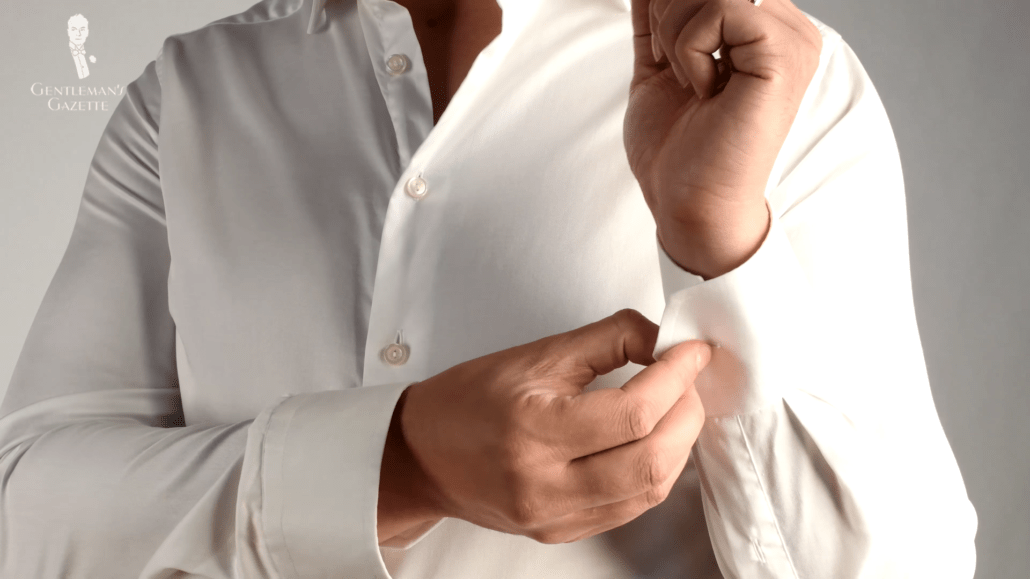
The most common item (not counting underwear) of which a man will own multiples will be white dress shirts. They’re a staple item that you might wear multiple times a week, so you’ll need duplicates unless you like to do laundry every day. If you prefer a particular brand and fit, it’s definitely safe to acquire more than one white shirt, because you’re bound to use them. Another common item to duplicate is suit pants. Because pants wear out faster than jackets, many guys will order a second pair to prolong the time they can wear the suit, since you can patch jacket elbows but not fix a worn seat. Moreover, it will be nearly impossible to match fabrics in a certain number of years when the first pair wears out. These are no-brainers for getting two (or more) of the same item.

However, be careful, as a rule, about buying multiples of the same item on impulse. Many of us have had the experience of absolutely falling in love with a new article of clothing. We treat it with great care, brushing off every speck of lint, storing it properly in a garment bag–surely you need two of this garment, right? Maybe not. You need to be really sure that this is a long-term relationship, even though you may not have that much time to decide before the piece is sold out. As with any new relationship, try to picture the future: Is it possible your feelings will change? Will you be indifferent to it later? If you feel any hesitation or doubt, wait. Try to take an objective perspective on the matter. We at the Gentleman’s Gazette know from experience that you may think you absolutely love something at first, only to find something better later–and now you’re stuck with two to get rid of at a loss on eBay.
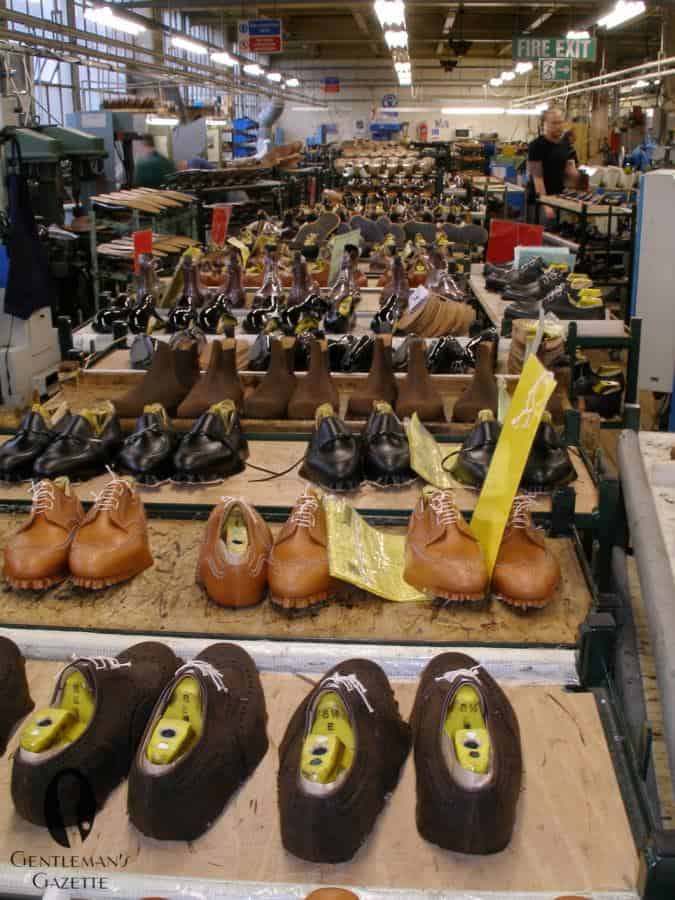
Your duplicated item may be of average quality, which you didn’t realize until you gained more knowledge of craftsmanship. Using the author (Christopher Lee) as a case study: he bought two pairs of SuitSupply monk strap shoes, which are decent enough, but then discovered Crockett & Jones. For less than the price of the two identical pairs he bought, Chris could have gotten a superior version from C&J. Alternatively, you may outgrow a certain style. For Chris, SuitSupply was again the culprit; in this case, their shorter, slim-fitting jackets. One day, after trying on a Ring Jacket in a more classic cut, he discovered his earlier choices had been influenced by trends and not by what looked best on his form. The two duplicate jackets from SuitSupply had to be sold off.
Now, there’s nothing wrong with trial and error, but don’t compound the error by committing it twice. It’s perfectly fine to settle for the best you can afford at a certain time in your life, but it’s important to realize that in a few years you may change, so wait until you’re reasonably sure that you understand your style and are happy with it before doubling up on the same article of clothing. Sometimes “one of a kind” will be more precious and gain more of your appreciation.
Multiple Shades of the Same Color
When you begin building a wardrobe of classic menswear, your guiding principle will be versatility. Maybe you’re young and on a limited budget but need some tailored clothes for a new job after college. Or you may be an older guy just discovering the appeal of dressing well who has a mortgage and kids who will soon head off to college. All of these are valid reasons to rely on a single item to do a lot of heavy lifting, like a pair of mid-gray pants that you can wear with navy blue, brown or charcoal sport coats. Eventually, you buy a different navy blazer as your clothing budget picks up, but this navy is more of a mid-blue and the first one you had is more of a “midnight” navy. At this point, you realize that not all grays are the same. Some contain an undertone of light blue (marketed as “ice” or “glacier”). Some may have an olive green cast; others tend toward brown (taupe), and the one you have doesn’t look exactly right with your new blazer. Gray is both versatile and tricky–it can go with so many other colors, but as we all know, there are “fifty shades of gray,” and you need the right one. A gray pair of pants that contains a hint of brown will look better with blue or beige but maybe not as nice with charcoal. You’ll also want the right amount of contrast, so a mid-gray pair of pants pairs with a darker navy jacket, but a dark gray pair will not. All of this is why menswear connoisseurs often own more gray pants than any other color. These aren’t exact duplicates but are all “gray pants.”

Other colors demand varying tones too. In an earlier article, we’ve talked about how to wear off-white, which can be quite difficult to combine because it exists in so many tones. Some have a yellow cast, others with more grey, some whiter, some browner. Yellowish versions will go nicely with royal blue but might look odd with a light gray. In short, multiples of the same color are a necessity for the growing wardrobe.
Stylistic Variations of the Same Item
Even if you vary the tone of an item like pants, at a certain point in your menswear journey you begin to wonder how you’d like the same pants with pleats, with side adjusters, with cuffs, or in a high rise. These stylistic differences would be another good reason to own multiple examples of “gray pants,” or blue, or brown, or any other color. You already have multiple white shirts from a brand you like, but why not in a spread collar, point collar, cutaway collar, and turn-down collar? If you own suits in the Neapolitan style, the sleeves can be shorter than ones with more of a British cut. This could mean getting the same shirt in two different sleeve lengths. In the colder months, you may want to layer with a brown cardigan with sleeves when it’s freezing but a sleeveless version when it’s a few degrees warmer, so you need two brown knits. Sometimes you set out to get one thing to fill a gap in your wardrobe–like a blue striped shirt, and then you discover that there are pinstripes, banker stripes, Bengal stripes, and more; one blue striped shirt can quickly turn into a half dozen.
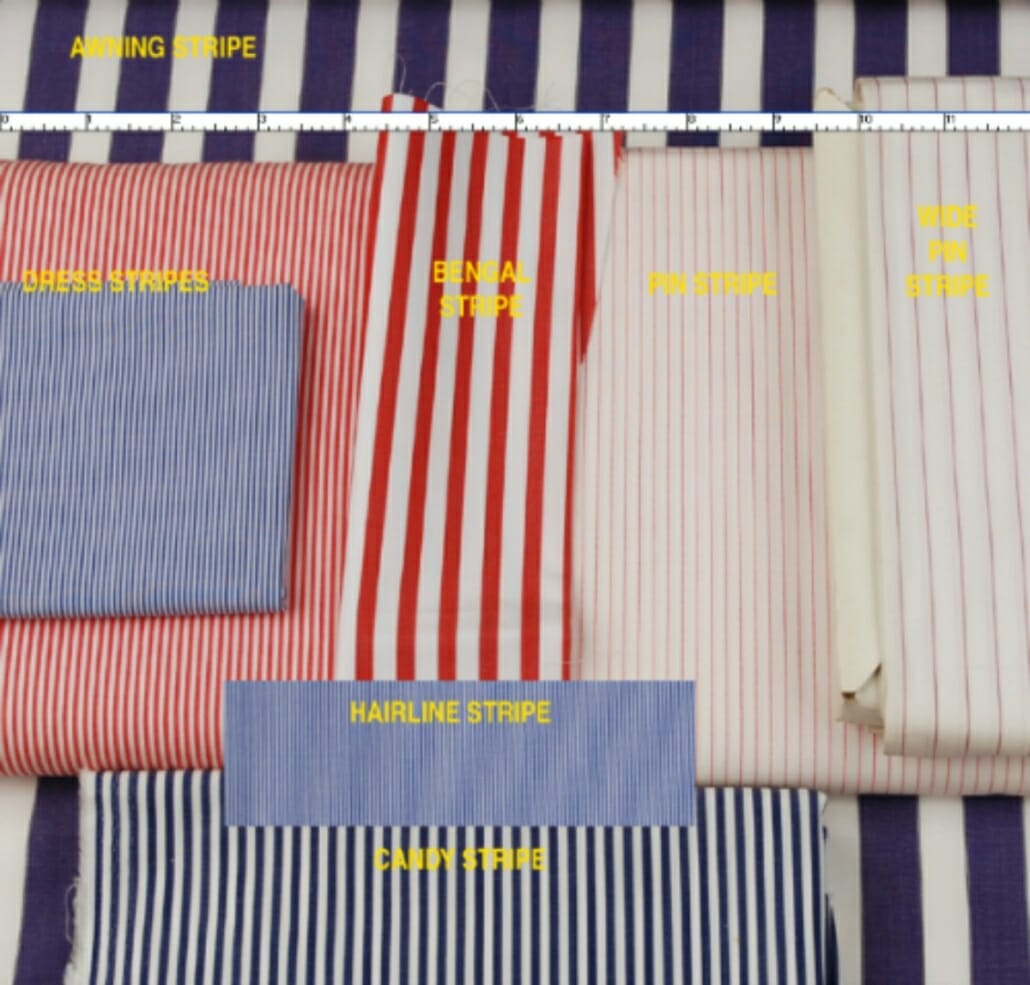
Accessories are just as useful to duplicate. A single burgundy grenadine tie is terrific, but one with a small weave (garza fina) is subtly different compared to a large weave (garza grossa), and a 3″ wide version has a different look than a 3.5″ or maybe even a 3.25.” If you bought those high-waisted gray pants, you’ll need a shorter length burgundy grenadine too, so it can end at your waistband. Based on your individual style, you could potentially own five
grenadines of any single color.
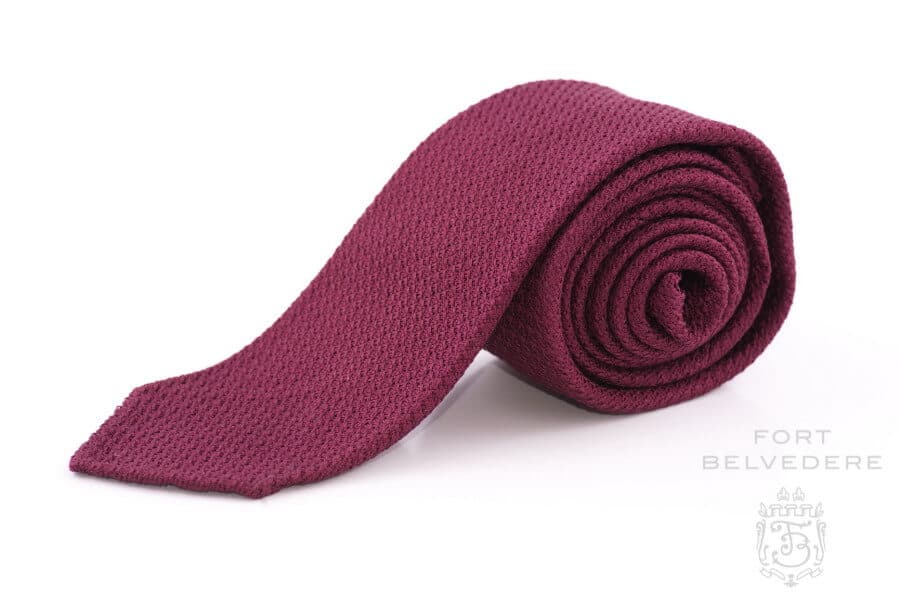
Burgundy Red
The principle of doubling up can also help to span the the formal/casual divide. If you want to put on something casual as one part of your outfit, all of it needs to be casual and likewise if you are dressed more elegantly. So, if you’re wearing a blue cotton sport coat and no tie, you may want a pair of casual gray chinos instead of a wool pair with a sharp crease down the front.
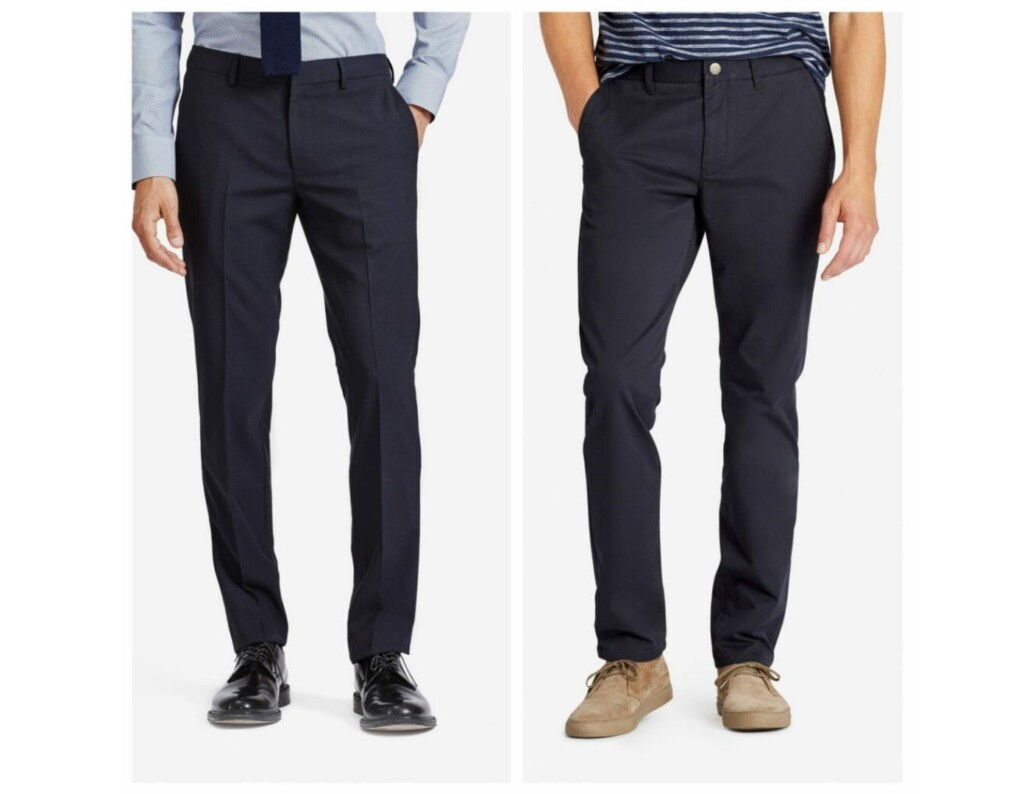
Keeping a color or fit you enjoy but adding some sort of important difference helps fill different niches in your wardrobe. It fulfills the desire to keep collecting and keeps things interesting. Going down the rabbit hole of possibilities is a fun way to experiment and bring variety into your clothing repertoire.
Same Item, Different Fabric
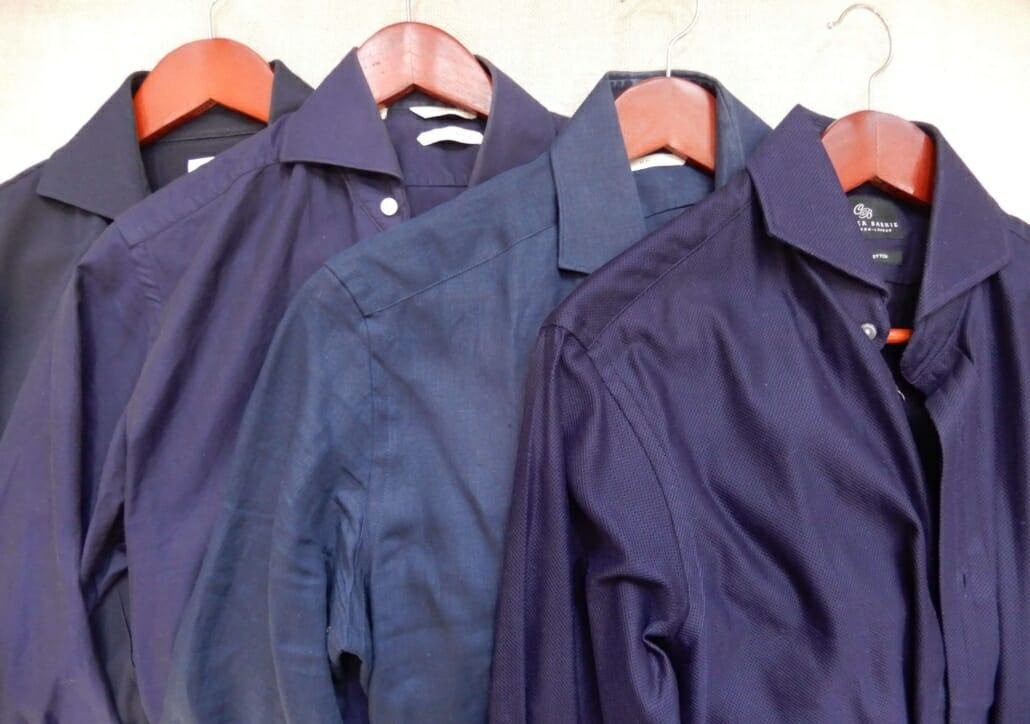
Once you go beyond the basics of worsted wool for suits and cotton for casual wear, you can explore different fabrics and try the same items in different materials. In summer, you might invest in a navy linen shirt, a navy giro inglese shirt, a linen-cotton combination (because you want to see how it compares to pure linen), and a cotton jersey knit. They all might all be navy, all have the same collar, button style, and fit. but each fabric will have its own character. Linen will have a sheen and wrinkle in a way that suggests relaxed summer ambiance. Giro inglese will feel cooler because of its open weave, allowing breezes to penetrate on hot days. Linen-cotton is more formal and can be worn to the office. Different fabrics are also required to match the rest of what you’re wearing. If you have a relaxed linen jacket on, worsted wool pants will simply not look good. A printed silk tie looks great with a business suit, but you might prefer a knitted tie or a shantung silk with a casual sport coat in the same color.
Same Item, Different Seasons
Another aspect of the “same-item-different-fabric” principle is owning parallel accessories or garments for different seasons. A pair of mid-weight gray wool pants might be fine for three-season wear, but when cold air rushes through them in December, you’ll be yearning for heavier gray flannel. When you enjoy the cool breeze of your open-weave shirt. you’ll wish you had the same material for pants in your favorite shade of gray. A similar approach applies to accessories. Some tie fabrics, like grenadine, can be worn any time of the year, but a linen tie says “summer” while wool flannel ties look great with cold weather knitwear. When you hit on a combination you love, you will also want to do the same in different seasons, even down to your favorite patterns. So, you wear a brown fresco sport coat and beige linen glen check necktie in the summer but a brown tweed jacket and a beige wool glen check tie in the winter.
Same Pattern, Different Color
Though they aren’t duplicates in a strict sense, owning a menswear item in range of colors featuring the same pattern is a great way to expand on the concept. The author is a fan of the glen check and has rust, brown. blue, and beige glen check ties as well as glen check jackets in blue, tan and gray. One can never have enough of a classic menswear pattern, and repeating it across your wardrobe is easy to do. You can increase the variations exponentially by expanding your glen check into a Prince of Wales pattern, which is essentially the same but with the addition of a grid in another color. Using the same pattern in different base colors with different overcheck colors multiplies your options considerably.
Conclusion
Variety may be the spice of life, but sameness can also have its perks. Though buying two of the exact same menswear item requires careful consideration to avoid wasting money, there are lots of other ways to use duplication to enhance your style. Whether it’s getting multiple shades of the same color, the same item in different finishes, or the same pattern in different colors, “variation on a theme” makes for a creative way to grow your wardrobe. So, how do you do duplicates? Tell us in the comments section.

I’m there. But the dupe problem isn’t likely to go away for me any time soon. Oregon weather is famous for “having all 4 seasons in a single day”. Unlike say Miami where color is the only consideration.
As much as I try to cull the herd at the start of a season, there’s reservations about parting company because those black swan/out of season weather events can and do occur. Kicked myself over that a number of times. But to be honest, since I prefer to be thought of as well dressed, being prepared means taking up almost as much closet space as my wife?
Is it possible GG could run a feature on long term storage or “mothballing”? The general rule of thumb is; if you haven’t worn or used something over the last year, chances are you won’t! Just haven’t found that to be the case in the Pacific Northwest. But I’ll be damned if I’m going to turn my entire sense of style over to Columbia Sportswear?
I am surprised by the assertion that a gentleman sells things on eBay. A gentleman donates unwanted items to what I believe is called a thrift shop in the USA
Brigadier Ali,
How right you are!
I’m fed up with cheapskates.
Some of the most reasonable advice you’ve ever given.
I’ve come to the conclusion that buying duplicates is definitely worth it, providing it’s a piece of clothing that you can and would like to wear almost every day. I regret I didn’t follow this principle for a pair of pants I once bought and that was simply perfect…until it tore due to wear and tear.
So, if you really fall in love with a garment and have the possibility to do so, buy twice.
@Brigadier Ali
If by gentleman you consider someone of a considerate income, you may be right. However, there are some “cheapskates” among the readers of this gazette who are in need to sell some of their wardrobe to be able to build up a worthy one. Also, they are helping other aspiring gentlemen in need to find wardrobe of certain criteria for an affordable price, and most notably for a wider range of clients than traditional thrift shops, which is not forcingly an unnoble undertaking.